Getting in shape without working out
When you hear about getting in more exercise, you probably think of the gym and the price tag that comes along with a gym membership. But there are ways you can still break a sweat, no gym or workout equipment necessary. Enter: Incidental exercise.
There are plenty of things you do on a daily basis that provide bouts of physical activity for your body. For example, when your supermarket runs out of shopping carts and you’re forced to lug a heavy basket of groceries? That’s a form of incidental exercise.
The best part is that science has got your back too. A 2018 study published in the British Journal of Sports Medicine suggests any form of physical activity counts towards your health. In other words, you can have bouts of high physical activity (like running for a bus or train) and that itself can offer a health advantage. Incidental exercise should not be thought of as working out in the traditional sense, but a form of physical activity, nonetheless.
To understand how, where, and when you could get your incidental exercise in, we spoke with health experts who offer their tips to get in shape without actually working out.

Grab a basket instead of a cart at the grocery store
The next time you need to shop, grab a basket instead of a cart. “Walking around the store carrying your groceries will help you build core and shoulder strength,” explains Marie V. Ande, a certified strength and conditioning specialist, in Flemington, New Jersey. And just think of all the money you’ll save by skipping unnecessary (and heavy) impulse purchases.
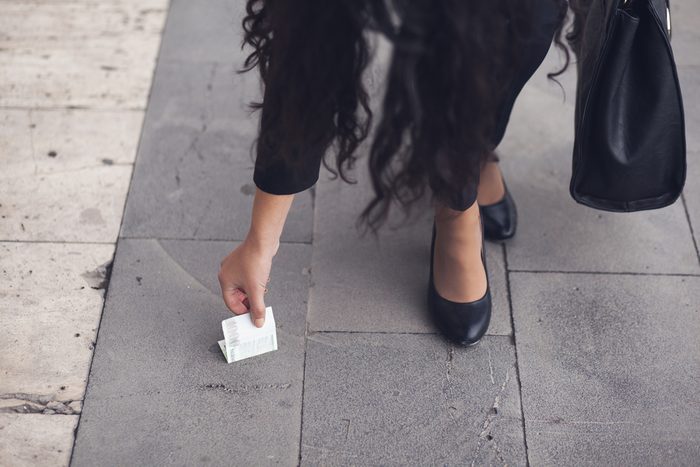
Drop it low
How many times a day do you bend down to pick something up off the floor, lift your child, pet a dog, tie your shoe, or put away something under the bed? Make the most of these impromptu squats by making sure you’ve got good form, says Richard Sullivan, a senior fitness specialist. When bending over, make sure to pull in your abdominals, tighten your core, and slightly arch your back without twisting. Or, instead of bending from the waist, squat down with your legs—you’ll get a mini core workout, and it will help protect you from throwing out your back.
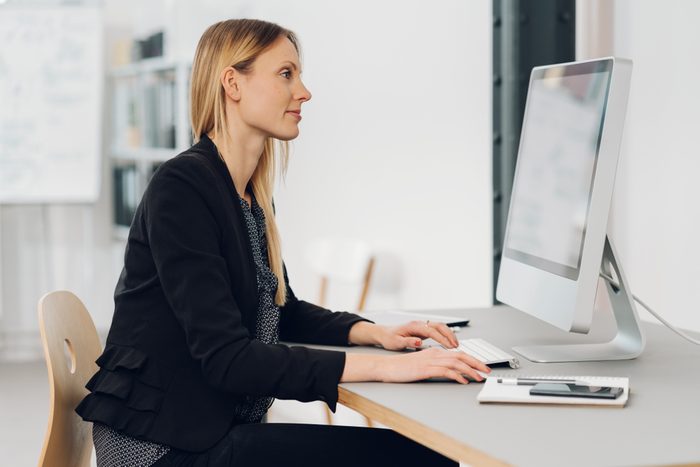
Perfect your posture
Standing up straight is actually hard work. “Maintaining good posture while standing, sitting, walking requires that you engage and tighten multiple muscles—so much so in fact that most people cannot maintain proper posture for even one minute,” Sullivan says. Practice standing and sitting up straight, with your core tight, and your shoulders pulled back and down. (Here are 7 ways you can improve your posture.)

Deliver a message in person instead of sending an email
Texting, email, and voicemail are wonderful time savers but they’re not doing your waistline any favors, says David Greuner, MD, head surgeon and co-founder of NYC Surgical Associates. If you need to convey a message to someone within walking distance, stand up and walk over and talk to them. “You’ll get a nice change of scenery, a little exercise, and improved work relationships,” Dr. Greuner explains.

Stretch before you step out of bed
Giant early morning stretches aren’t just for cartoon characters and soap opera stars. In fact, taking a few minutes to really stretch before starting your day is one of the simplest ways to help get in shape, Dr. Greuner says. “Easy, simple stretches wake up your mind and body and increase blood flow and inflow of nutrients to your muscles,” he explains. Try these easy yoga stretches designed for weight loss.
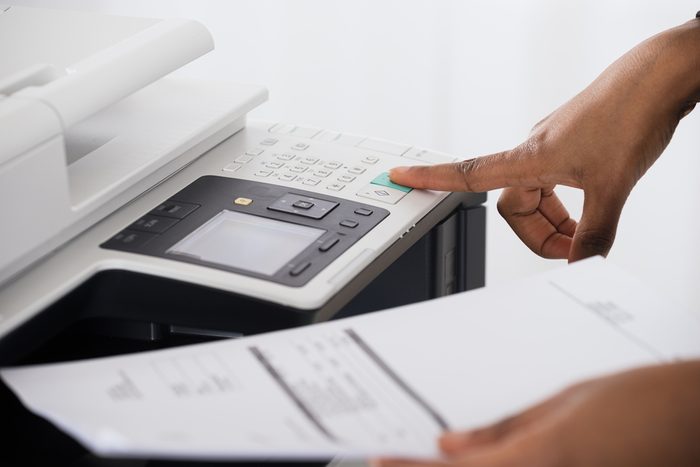
Pick the remote printer
Offices aren’t generally known for helping people get in shape, but you can fix that by adding extra physical activity to your day. When you need to print a document, send it to the printer furthest away so you’ll need to take a little stroll to pick it up, suggests Christel Oerum, certified personal trainer and founder of diabetesstrong.com.

Schedule walking meetings
Another office trick is to schedule face-to-face meetings in a place where you can stand, or better yet, take a walk together. Not only will you get some extra steps in but walking has been proven to help increase creativity so you’ll get more done. (Being able to walk and talk is one of the 9 ways you may be more fit than you think.)
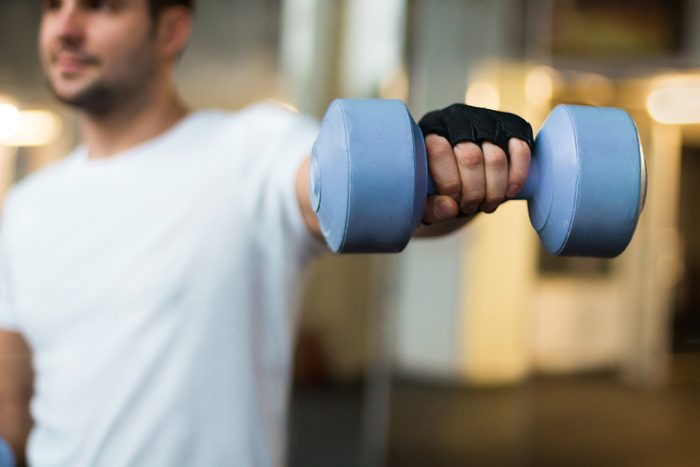
Put the “real” back in reality TV
Love watching weight-loss competitions? Don’t just be a bystander, participate, Oerum suggests. If they squat, you squat. If they lift weight, grab a couple of gallons of milk or soup cans and join in. At every commercial break, do jumping jacks, sit-ups, or burpees until the show comes back on. (Check out these resistance-band exercises that will work your whole body.)

Download a break reminder app
Scheduling breaks throughout your day to take a few stress-relieving deep breaths, do some lunges, or take a brief walk is one of the best things you can do for both body and soul—that is, if you remember to do it. Take the guesswork (and guilt) out of the equation by downloading a reminder app, Oerum says. When it beeps, drop what you’re doing and take a health break.
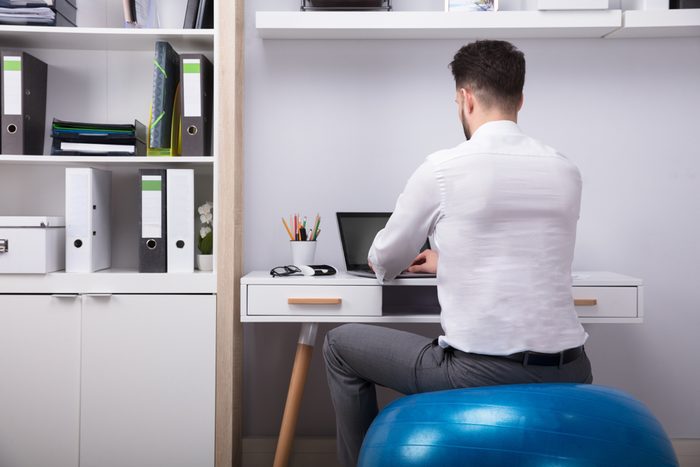
Balance on a chair
There’s a whole world of active sitting chairs that let you bounce, rock, sway, or integrate some other form of movement to help you get fit while you sit, says David Skolnik, doctor of physical therapy and certified strength and conditioning specialist. Yoga balls are a popular choice, requiring you to keep your core tight the whole time you sit. For more fun and fitness in the office or at home, he also recommends the Tic Toc, which creates a gentle rocking motion and the Swopper (also available on Amazon), which allows you to bounce and rock simultaneously.
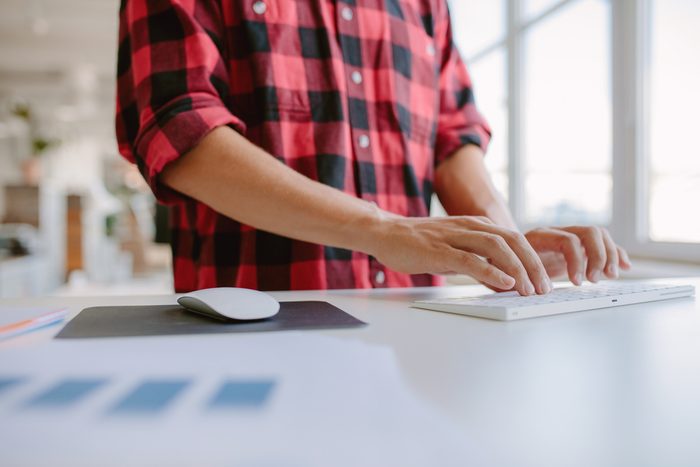
Try a standing desk
Standing desks and their more intense cousins treadmill desks are popular for a reason: They allow you to keep moving while being productive at work, Skolnik says. Not ready to commit to a whole day on your feet? Try a standing desk converter, which allows you to sit or stand. (Don’t miss these other 9 essential hacks to make your workspace healthier.)
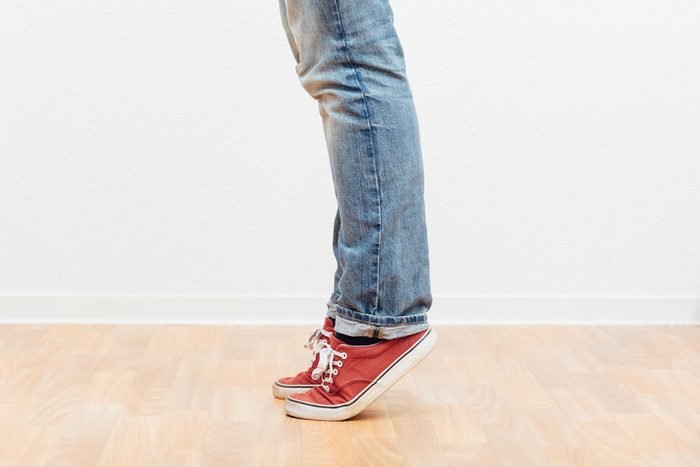
Do calf raises while waiting in line
Ballerinas have gorgeous calf muscles, largely due to how many relevés (calf raises) they do. But you don’t have to be a dancer to do the simple movement. In fact, unlike squats or burpees, this exercise is so unobtrusive that you can do it anywhere you’re standing still, like while you’re waiting in a line, says Tianna Strateman, VP of Education for Club Pilates.
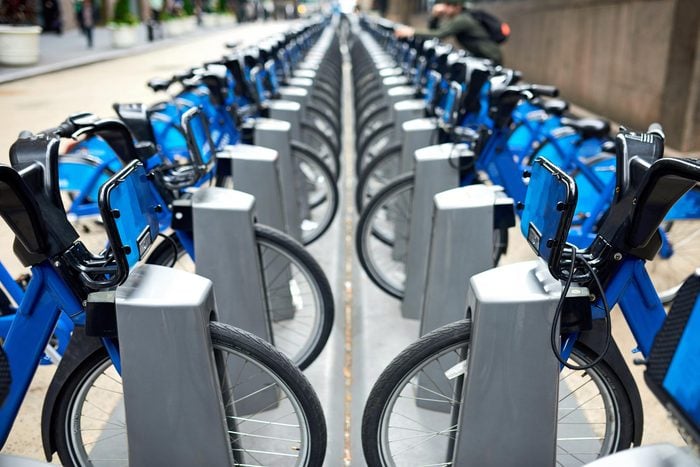
Ride a bike share
If you live in a large city, chances are you’ve seen banks of bicycles just waiting to be ridden, like Citi Bike in New York City. You can buy a cheap monthly pass, however, many employers will cover the cost. Some cities allow you to check bikes out for free. All you do is unlock the bike at one station, ride it to another bike station nearest your destination and check the bike back in. In fact, according to 2017 study in the International Journal of Obesity, simply biking to work can help inactive, overweight people lose fat just as well as if they were doing dedicated sweat sessions.
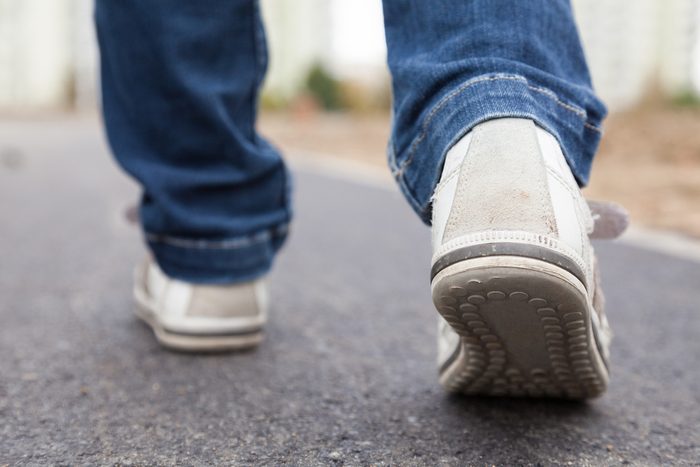
Skip the Uber
If you’re within two miles of your destination, instead of calling an Uber or a taxi, walk the distance, says Jorge Blamo, NASM-certified personal trainer, in Cincinnati. The benefits of a 15-minute walk are nearly limitless: You get a quick workout, some fresh air, and a boost in your mood, among other perks.

Take more water breaks
Keeping a water bottle on your desk is a great way to encourage hydration, but take it a step further (literally!) by taking regular water breaks, Blamo says. “Every hour take a walk to the water station and stretch out your neck, arms, back, and legs along the way,” he says. Bonus: It will help keep you more alert and focused throughout the day.
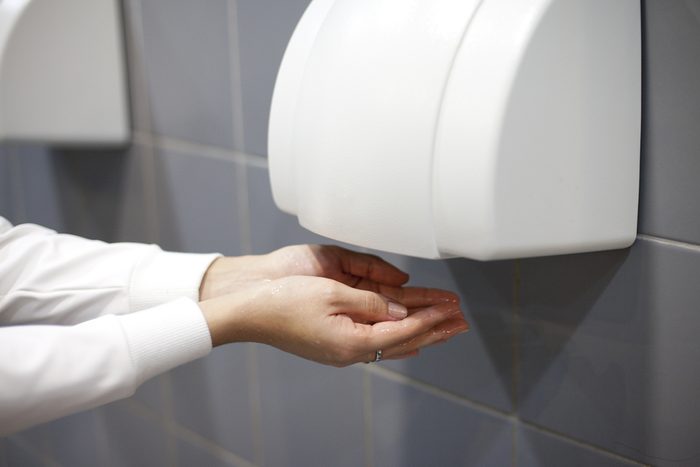
Use the bathroom on another floor
All those water breaks will catch up with you eventually and when nature calls, take the stairs to a bathroom on a different floor, Blamo says. Walking up and down the stairs is great exercise and you can even add in some lunges as you go for greater calorie burn. Or try one of these strategies to walk more for weight loss.
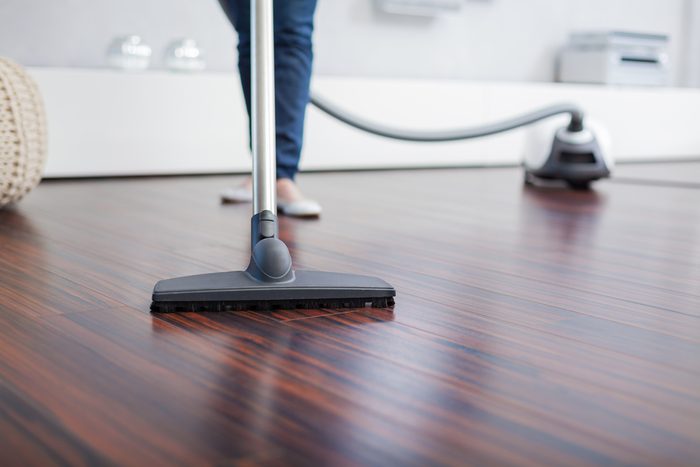
Let the rhythm be your guide
Using your favorite songs can motivate you to move more, Blamo says. One way is to challenge yourself to do something active—sweep the floor, fluff the pillows on the sofa, or just bounce to the beat—for the length of one song. Try listening to the best workout music to inspire you.
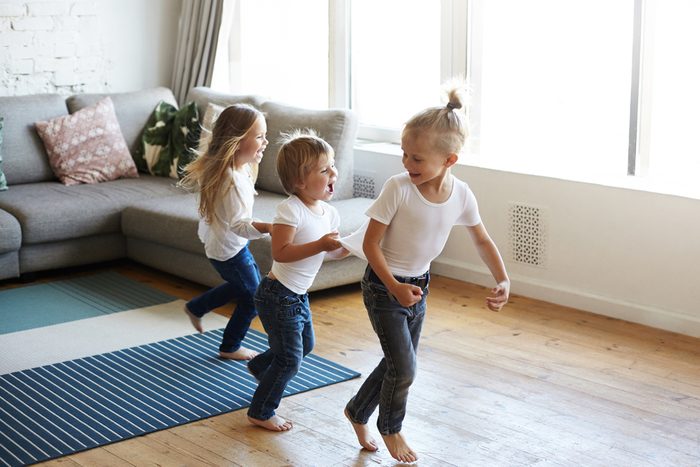
Host a dance party
You don’t need a disco ball or a fog machine to get your groove on in your living room. Crank up your favorite tunes and dance your heart out. Bonus: Kids love to jump in, and their enthusiasm will inspire you to try some new moves while you make memories. Dancing is one calorie-blasting workout that can help you lose weight.

Go in to get your coffee
Drive-throughs are convenient, but parking and walking into the coffee shop to pick up your morning brew will not only burn some extra calories but also can help save time. You’ll get to skip the typically long drive-through line, Blamo says.

Carry your groceries to the car
If you’ve got only a few bags to take to the car, skip the grocery cart and carry your bags “farmer style” to the car, Blamo says. Load up each arm equally and let the bags hang down each side, without bending your arms at the elbow as you walk. You’ll strengthen your upper back, shoulders, and core—and avoid having to return an empty cart.
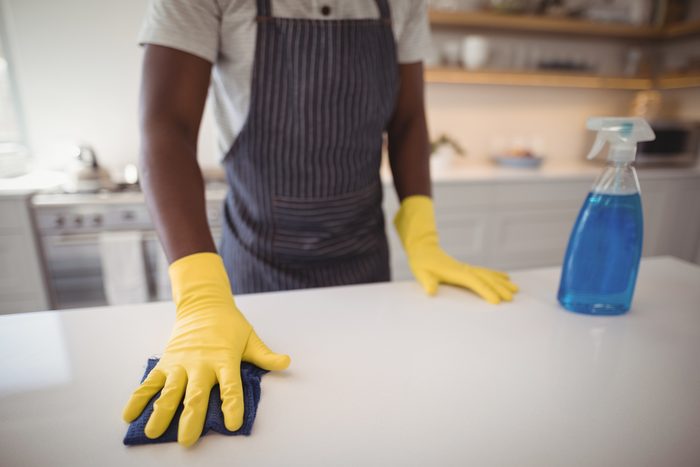
Do your chores
Get your chores done. It’s that simple. You’ll get some exercise and a sparkling house as a bonus. Put on some music, listen to your favorite podcast, or even call your mom to make the time pass more quickly. These are the chores that burn the most calories.
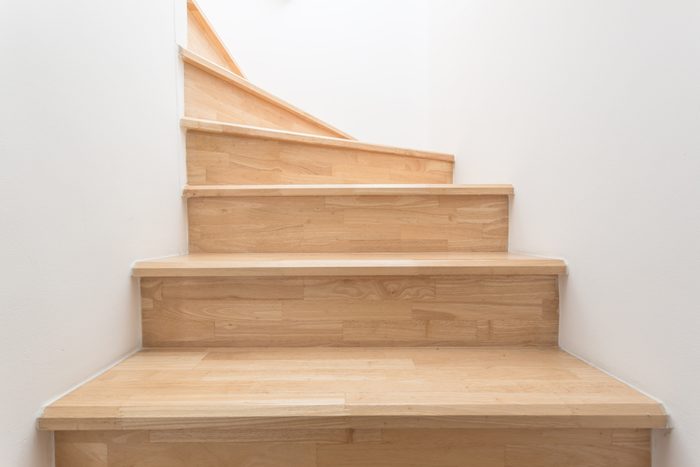
Be less efficient
We pride ourselves on being masters of multitasking—we bring the laundry upstairs when we’re going to get dressed; we drop by the bathroom on our way back from a water break. Consider how much more exercise you’d get naturally if you separated all these tasks. Instead of trying to be efficient, consciously do one thing at a time. It may take longer, but you’ll log dozens of more trips up and down the stairs, around the office, and around town. All this movement really adds up. According to a 2011 study in Medicine & Science in Sports & Exercise, people who do more “incidental” activities—like sweeping or taking the stairs instead of the elevator—have better heart-lung function than those who don’t. As a bonus, these random acts of exercise also protect the brain as we age, according to a 2018 study in PLoS ONE.
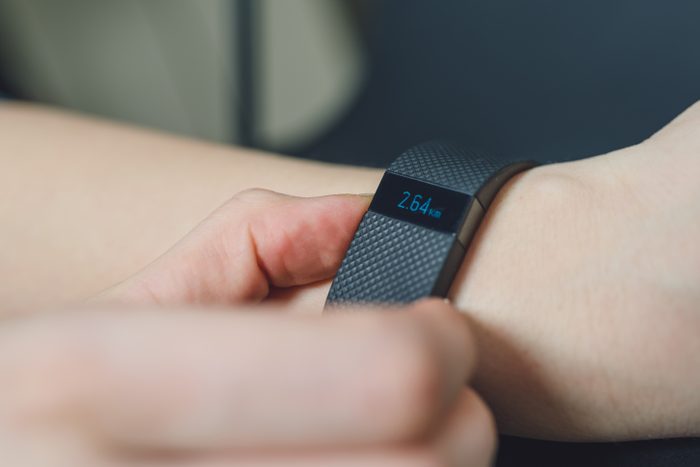
Wear a pedometer
No fancy tech gadget required. Just strap on a cheap step counter and glance at it occasionally throughout the day. You’ll be surprised at how motivated you may start to feel when you’re just 200 steps shy of a nice round number, like 5,000 or 10,000. A 2018 study in PLoS Medicine shows that tracking steps daily could inspire people to be more active over time, even up to four years later. These are your body’s clear signs you need to move more.